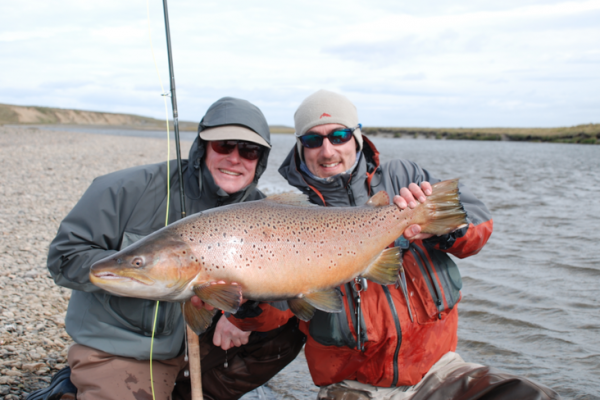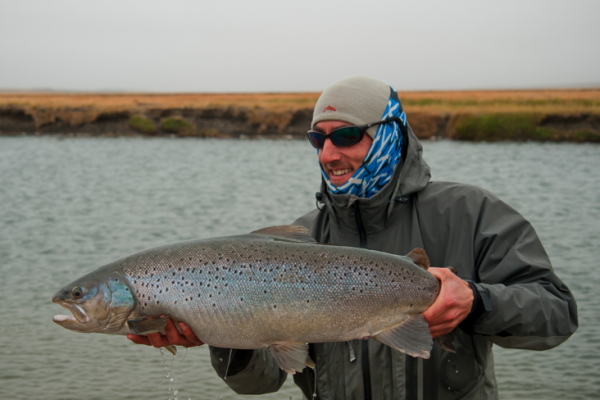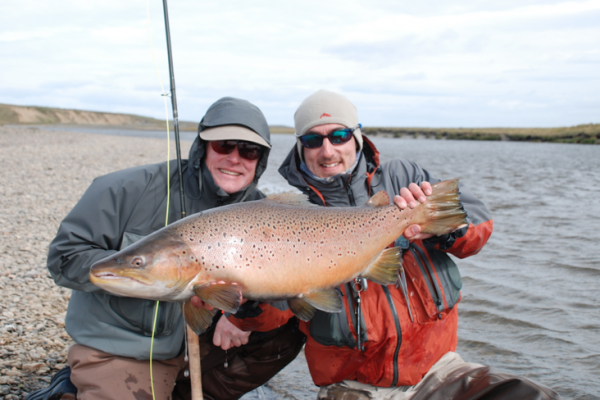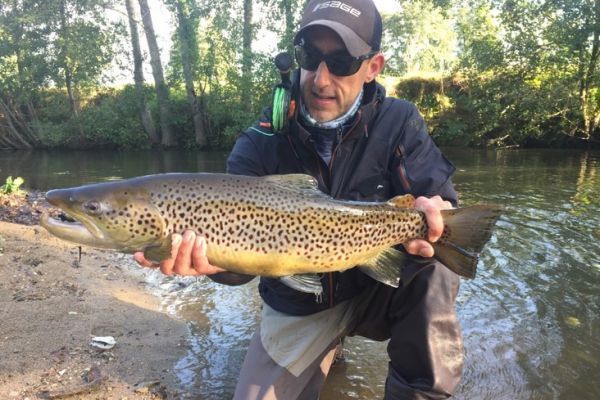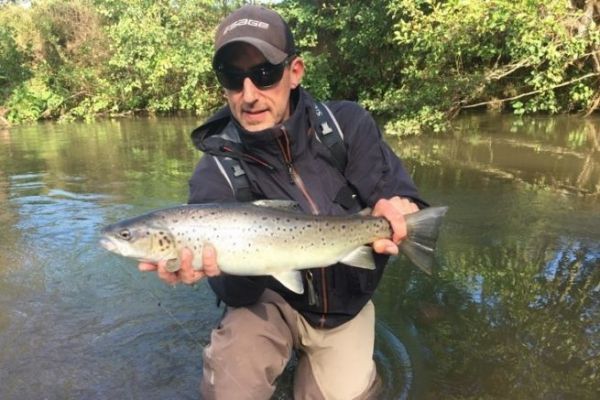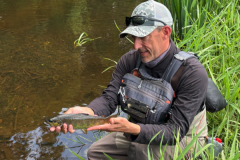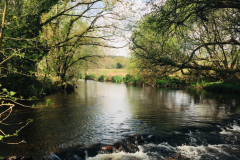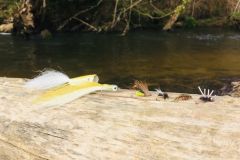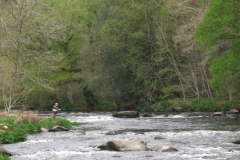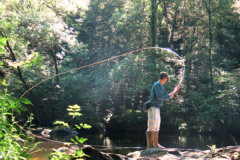An exciting migratory fish for fly-fishing
Sea trout are anadromous amphihaline fish, meaning they cycle at sea but reproduce in freshwater. Unlike salmon, they can make several upstream and downstream cycles during their lives.
Even though they will be giving priority to the formation of their reproductive organs, sea trout feed a little in freshwater. They are therefore generally "easier" to bite than their cousin the Atlantic salmon.
They can be found at sea, as in Denmark, where inshore fishing is highly prized and practiced by local fishermen who use imitations of small fish, shrimp and other prey in shallow waters. This is one of the few destinations where this type of fishing is carried out.
In other destinations, such as France, the UK, Scandinavia, Iceland and Argentina, sea trout are fished in rivers using a variety of techniques.
These fish are aggressive, combative and powerful. Their fishing is technical, as you need to know their behaviour and habits to get them to bite. Like salmon, you need to cover the spots and find what will trigger them. Techniques vary considerably from river to river and from region to region, but what they have in common is that they are mainly sought by fishing downstream.
Whatever the destination, sea trout fishing is a challenge. These fish don't feed, or feed very little, so you have to find their behaviour according to the season and the day, and what will make them want to come and take our flies, often out of aggression and instinct.
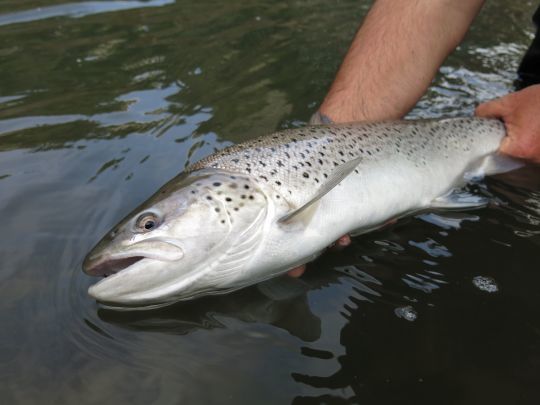
Fishing spots in Europe and around the world
The best river in the world for catching very large specimens is the Rio Grande in Tierra del Fuego, Argentina. This river regularly catches sea trout in excess of 10 kg and up to 15 kg. In fact, several world records have been set on this river, notably at the Kau Tapen lodge run by Nervous Waters.
A little further north, the Rio Gallegos, offers similar conditions and fish, although the number of catches is often lower than on the Rio Grande.
Fishing there is similar, often downstream with nymphs and streamers, and sometimes dry! As these two parts of the world are very windy, two-handed rods are often used to counter the gusts and cross the river. A good caster can also fish with a one-handed rod on certain pools, but the task is arduous.
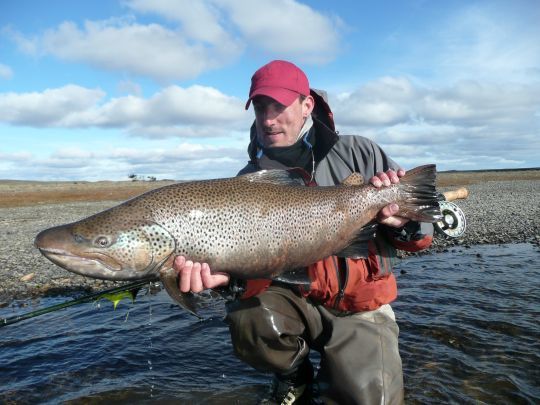
In Sweden, the Morum is one of the most famous rivers for its large sea trout. Records have also been set on this renowned river. Many other coastal rivers, such as the Em, offer excellent fishing opportunities for this species.
Sea trout fishing is also a tradition in the UK. Numerous well-known rivers roll their waters here and are renowned for their pursuit of this species. In these regions, lake fishing also allows you to catch sea trout (and salmon) that cross the lakes before arriving on certain rivers where they will lay their eggs. The catches can be substantial and sometimes include some fine specimens, but rarely of exceptional size as on the rivers mentioned above.
Many of Iceland's rivers offer excellent sea-trout runs, and some of them, such as the Tungufljot, catch some very fine fish every year, with specimens of over 20 pounds not uncommon. Fishing techniques are a mix of all those used in other countries (drowned, streamer, tube fly, nymphs, surface).
In France, Normandy is unquestionably the region where the most sea trout are caught, with some very fine specimens weighing over 5 kg on the Bresle, Arques and Touques rivers.
Sea trout can also be caught on other rivers in France, but fishing for them is much more uncertain.
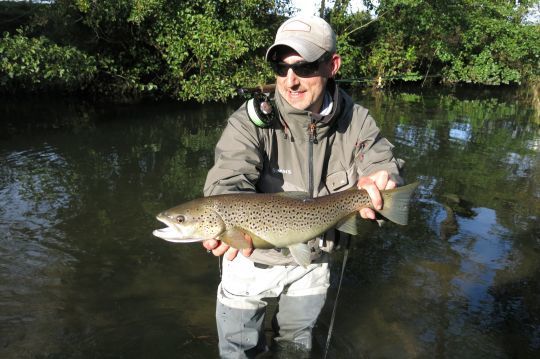
Sea trout fishing, specific equipment
When sea trout return to the river, they stay in the pools while continuing their gradual ascent.
Fishermen all over the world use a variety of techniques to catch them during this phase.
The equipment used will depend on the size of the river and the conditions, of course.
Two-handed and switch rods are commonly used to cover currents and fish-holding positions without tiring on medium to large rivers. These rods allow you to cast quickly over long distances and enjoy a comfortable fishing experience.
In smaller rivers, one-handed rods can be used. 9 to 10 footers of power 6 to 8 with bristles of different densities are well suited.
Depending on the season and the conditions, the lures used will be different. As always when fishing for migratory species, you need to adapt to water temperature and fish activity.
Nevertheless, floating lines extended by polyleaders are often the most versatile, allowing you to find the right layer of water for your flies. In some cases, sink lines may be necessary.
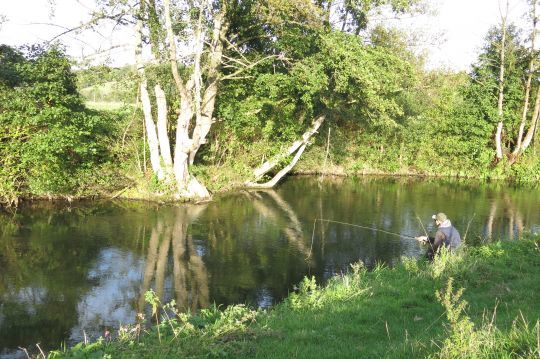
Sea trout flies vary according to local traditions and habits. There are as many types of flies as there are sea-trouting countries and rivers.
Drowned flies (which fish underwater) are mainly used to imitate various insects or simply to annoy fish into biting.
In the UK, as in Brittany and Normandy, drowned flies are most often incentive flies. They have a wing that vibrates in the current and colors that differ from river to river.
In Iceland and Argentina, the flies are quite special and have been developed over the years with the influence of various guides and anglers from around the world.
Streamers and nymphs with plastic legs that emit numerous vibrations are very effective in these waters. They can be animated by shooting and/or stripping to excite the fish. Strangely enough, they are rarely used in other destinations.
The surface flies used for Atlantic salmon, such as small bomber flies or small tube flies, also known as hitch flies, can be used to bring sea trout to the surface. It's a highly visual type of fishing that delivers big adrenalin rushes. Seeing a big sea trout chase a surface fly, then turn around and take it is something unique!
Tube flies are widely used in Scandinavian countries, influenced by salmon fishing, but also in the UK, and work in virtually all sea-trout destinations.
